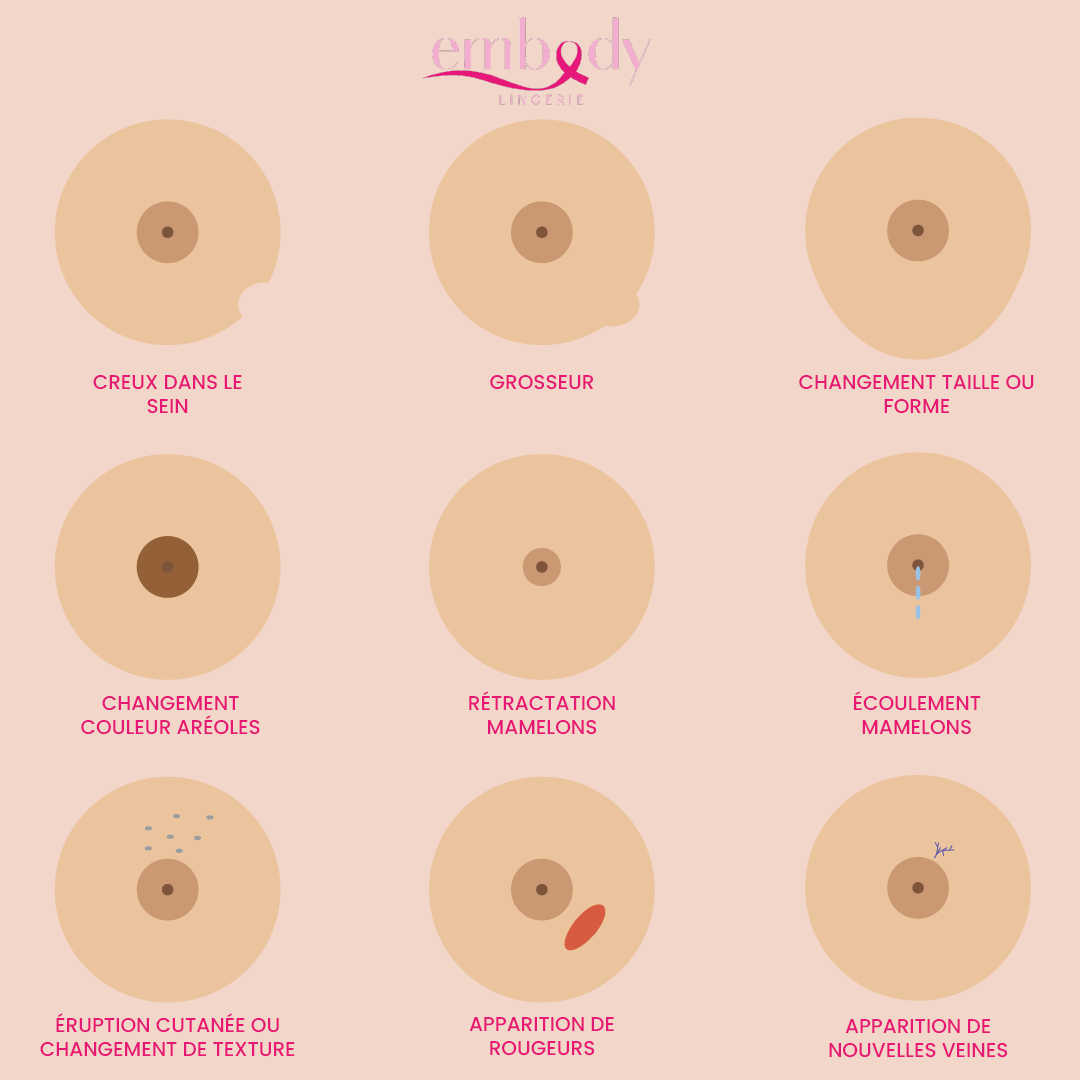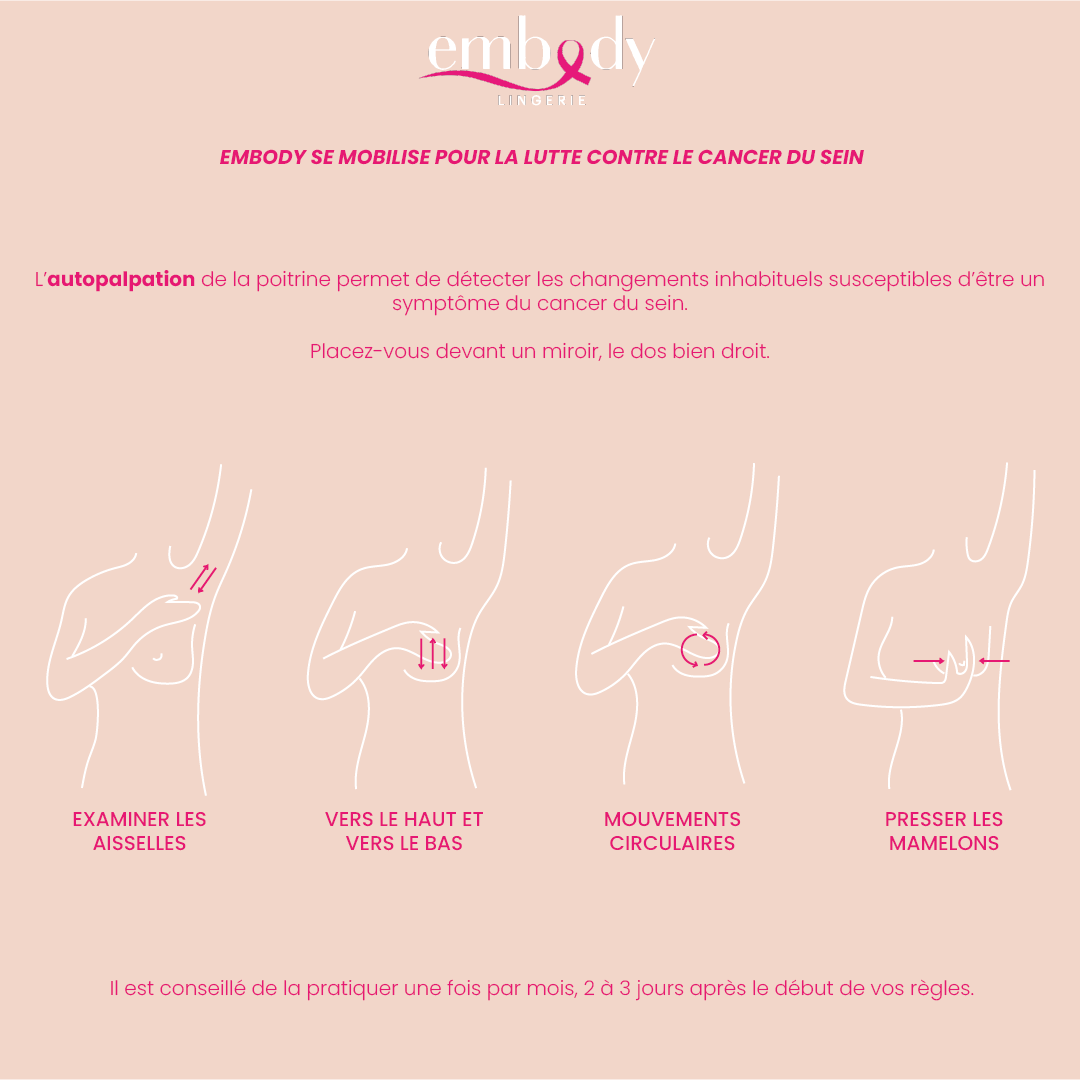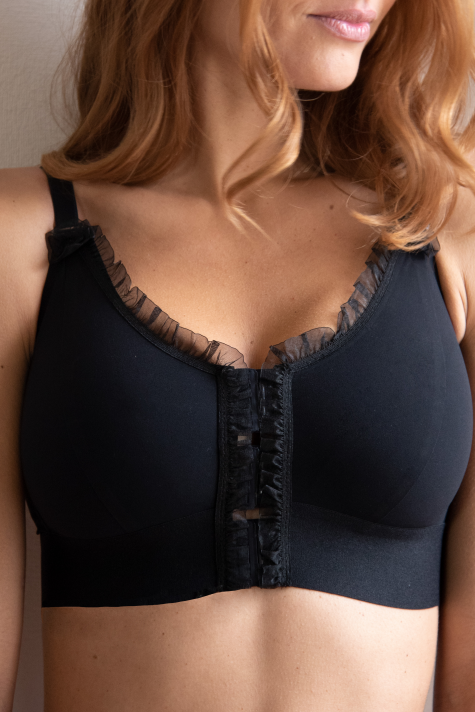Detecting breast cancer: the guide to breast palpation!
- 1898 views
- 0 Comments

Every October, a campaign against breast cancer is organized by the association Ruban Rose to raise awareness and support medical and scientific research.
Breast cancer
Breast cancer results from a disorder of certain cells that reproduce uncontrolled and generally constitute a tumor mass (tumor), affecting the tissues of the breast or the mammary gland. There are different types that evolve in different ways.
Cancer cells can remain in the breast but can also spread to other organs. That is why it is important to be vigilant when changes occur. In most cases, the spread of breast cancer can take months, if not years. But knowing what it is, getting to know your body and its possible changes can lead to early detection of breast cancer and better medical management: less aggressive and less intrusive treatment, thus better tolerated by patients.
In a few figures, breast cancer represents:
- The leading cause of cancer death in women,
- 2.2 million cases worldwide in 2020, making it the most common cancer,
- 58,549 new cases in France in 2018, including 12,146 deaths,
- Loan of 1 woman out of 12 is affected,
- 1 third of all new cases of cancer in women.
What is breast palpation?
In order to anticipate the onset of this cancer, doctors strongly encourage women (and men) to palpate themselves at home (themselves) regularly.
Indeed, breast palpation will help to prevent and detect the presence of certain abnormal changes in the chest: hollow in the breast, size, change in size or shape of the nipple, change in the color of the areolas, nipple retraction, nipple discharge, skin rash or texture change, appearance of redness, appearance of new veins or any other discomfort or pain in the breast… When these anomalies are brought to the attention of the doctor, they are then examined and confirmed, or not, through the performance of other additional tests (blood tests, ultrasound, MRI, mammography, etc.).

The guide to self-palpation
Breast palpation is a method that allows to better know her chest and also improves the relationship of women with their bodies. But above all, this self-examination of the breasts makes it easy to see any abnormal changes in the chest, and then tell her doctor.
The CNGOF and the national colleague of gynecologists Obstetricians French recommend to practice this breast palpation exam:
- 1 time per month (about 1 week after the first day of menstruation), starting at age 20,
- 1 time per month has a fixed date, for postmenopausal women,
- In addition to a mammogram every two years, for women aged 50 to 74,
- In addition to an annual examination in a gynaecologist,

>> Step 1: Examine the armpits
First, consider examining the pit of your armpit (also called an axillary pit). Any abnormal lumps or masses may be under the skin and may alert you. You can make this palpation while standing, sitting, lying, in a bath or shower: soap tends to facilitate palpation by improving the precision of the touch.
>> Step 2: Palpate breasts up and down
Then, palpate your breasts from the nipple to the outside of the breast, in a straight line and repeat this gesture until you have gone around the breast up and down. This method is called the radial method.
>> Step 3: Perform circular movements on the breasts
To do this, use the circular method of massaging the breasts with the three middle fingers of the hand (right hand for the left breast, and left hand for the right breast) in a circular way.
>> Step 4: Squeeze the nipples
Finally examine your nipples. Squeeze them gently and observe if it causes a discharge (fluid or blood). If so, contact your doctor or gynecologist immediately.
REMEMBER :
Breast self-examination is a prevention method and cannot replace the annual visit to your gynecologist. It is important to monitor her breasts and therefore test regularly.












comments (0)